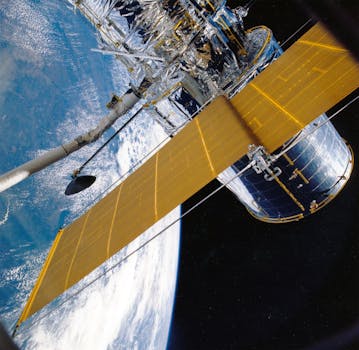
LEO Satellites: Revolutionizing Global Connectivity with WordPress
LEO satellites, or Low Earth Orbit satellites, are a type of satellite that orbits the Earth at an altitude of around 160 to 2,000 kilometers. These satellites have been gaining popularity in recent years due to their ability to provide high-speed, low-latency internet connectivity to remote and underserved areas. In this article, we will explore the world of LEO satellites and how they are revolutionizing global connectivity, with a focus on WordPress.
LEO satellites have several advantages over traditional geostationary satellites, which orbit the Earth at an altitude of around 36,000 kilometers. One of the main advantages of LEO satellites is their lower latency, which allows for faster and more responsive communication. This is because LEO satellites are closer to the Earth, which reduces the time it takes for signals to travel between the satellite and the user. Additionally, LEO satellites have a higher bandwidth capacity, which allows for faster data transfer rates.
How LEO Satellites Work
LEO satellites work by using a network of satellites in low Earth orbit to provide internet connectivity to users on the ground. Each satellite in the network acts as a relay station, receiving and transmitting data to and from the user. The satellites are connected to a network of ground stations, which provide the connection to the global internet. When a user sends data to a LEO satellite, the satellite receives the data and then relays it to the next satellite in the network, which then sends it to the ground station. The ground station then connects the data to the global internet, allowing the user to access the information they need.
One of the key technologies that enables LEO satellites to provide high-speed internet connectivity is the use of advanced antenna systems. These systems allow the satellites to communicate with multiple users at the same time, increasing the overall capacity of the network. Additionally, LEO satellites use advanced modulation techniques, such as quadrature amplitude modulation (QAM), to increase the amount of data that can be transmitted over a given bandwidth.
WordPress and LEO Satellites
So, how do LEO satellites relate to WordPress? In short, LEO satellites have the potential to revolutionize the way WordPress users access and use the internet. With the ability to provide high-speed, low-latency internet connectivity to remote and underserved areas, LEO satellites can enable WordPress users to access the global internet from anywhere in the world. This can be especially beneficial for users in areas where traditional internet connectivity is limited or non-existent.
For example, imagine being able to access and update your WordPress website from a remote location, such as a rural village or a disaster zone. With LEO satellites, this is now possible. Additionally, LEO satellites can enable WordPress users to access a range of online services, such as email, social media, and online storage, from anywhere in the world.
Conclusion
In conclusion, LEO satellites are revolutionizing global connectivity and have the potential to transform the way WordPress users access and use the internet. With their ability to provide high-speed, low-latency internet connectivity to remote and underserved areas, LEO satellites can enable WordPress users to access the global internet from anywhere in the world. As the technology continues to evolve and improve, we can expect to see even more innovative applications of LEO satellites in the future.


